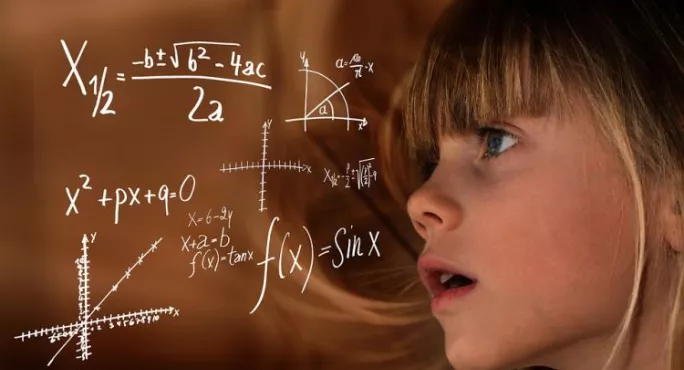- Home
- ‘It is time to stop dumbing down vocabulary in primary maths’
‘It is time to stop dumbing down vocabulary in primary maths’

“When I look at the word problem I know that the numbers and the word ‘altogether’ are important. It tells me that we are adding the two numbers together.”
“The equation I am solving is five add six is equal to something.”
“There are 11 flowers in the garden altogether, but I will check using my beadstring.”
You would be forgiven for thinking that the children discussing the problem are older than four or five years old. The mathematical language they use is correct, with a sophistication that is often reserved for students further up the school. Too often it is assumed that Reception children can’t handle more complex language and ideas, leading to the dumbing down of concepts and terminology. Words such as “pointy parts” replace “vertices”; “number sentence” replaces “equation”. I think it’s time we gave our younger children more credit.
Think about the equation 5 + 6 = 11. Now imagine trying to explain it using no mathematical vocabulary and no resources to support you. You could probably find some elaborate way of explaining it that made sense to you. Now try and explain to someone else. Would it make as much sense or would it just be confusing to them? Language is fundamental for understanding and needs to be at the heart of everything we do from the moment children start school, including in the maths classroom.
To achieve a high level of vocabulary and, ultimately, a deeper level of understanding from Reception onwards in maths, there are three key principles that my team focus on in every lesson:
1. Concrete-pictorial-abstract
In simple terms, “concrete” is stuff that children can manipulate (cubes and counters), “pictorial” is visual representations (drawings and pictures) and “abstract” is the number or symbol representation. When language is introduced alongside this process, children are able to link abstract language to real meaning as they can touch, move and manipulate resources in a way they can’t with words; pictorial provides the link between the two. Maths lessons across the school begin by using key vocabulary with concrete manipulatives. When pupils are confident with the concrete, the pictorial is introduced, before moving to the abstract method of recording. It is important to note that the concrete is always available at any age.
2. Key vocabulary reinforced through actions, synonyms and antonyms
Using the correct mathematical vocabulary is just the beginning. Children also need to explore what it means. They are introduced to key language alongside a physical action that represents that piece of vocabulary. The action supports the learning and their understanding of the word, as the same action is used for synonyms. For example, an arm across the body signifies subtraction but also take-away and minus, allowing the children to interchange language that is used in different contexts. Children are also introduced to words that are the opposite, so in this case addition, but also linking words such as inverse to mathematically explain the relationship between the two terms. With consistent reinforcement of language, children are able to effectively explain their working, giving us insight into their thinking. This is especially important in Reception, where most assessment is not written or recorded.
3. Questioning
As teachers, we question all the time, but how often do we truly ask “why?” in response to a correct answer? It was only after watching mastery teaching expert Yeap Ban Har model a lesson that I began to do this. Rather than saying “Yes, well done” to correct answers, I asked, “How do you know?” I remember the look of horror on my pupils’ faces, as they thought they had given the wrong answer, doubting their own working. It was only when they discussed their ideas out loud, using mathematical vocabulary, that they realised they were actually correct. Another variation is taking all the different answers at face value and taking the time to investigate each with the class.
Children love to learn through language. A shift of thinking will help us to create confident mathematicians who have a deep understanding of the topic. Not only this, our children love maths. By dumbing down vocabulary, we are doing a disservice to our youngest students. Young children are already learning new language every day, so why not teach them the correct mathematical language first time around?
Jade Fahie is a Year Four class teacher and lead of maths at School 21 in Stratford. She tweets at @jadefahie
Keep reading for just £1 per month
You've reached your limit of free articles this month. Subscribe for £1 per month for three months and get:
- Unlimited access to all Tes magazine content
- Exclusive subscriber-only stories
- Award-winning email newsletters